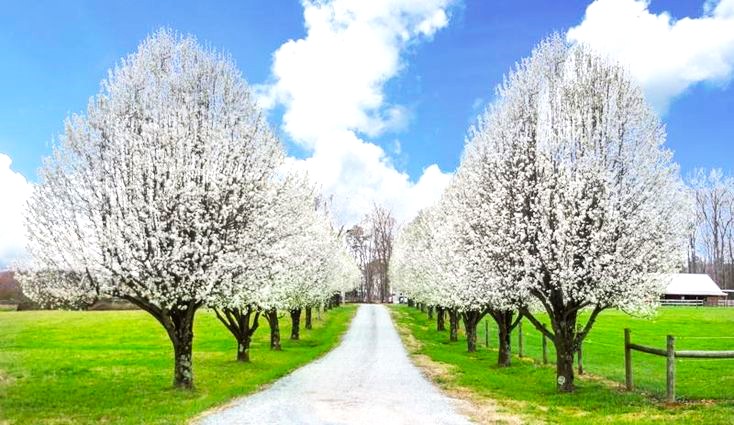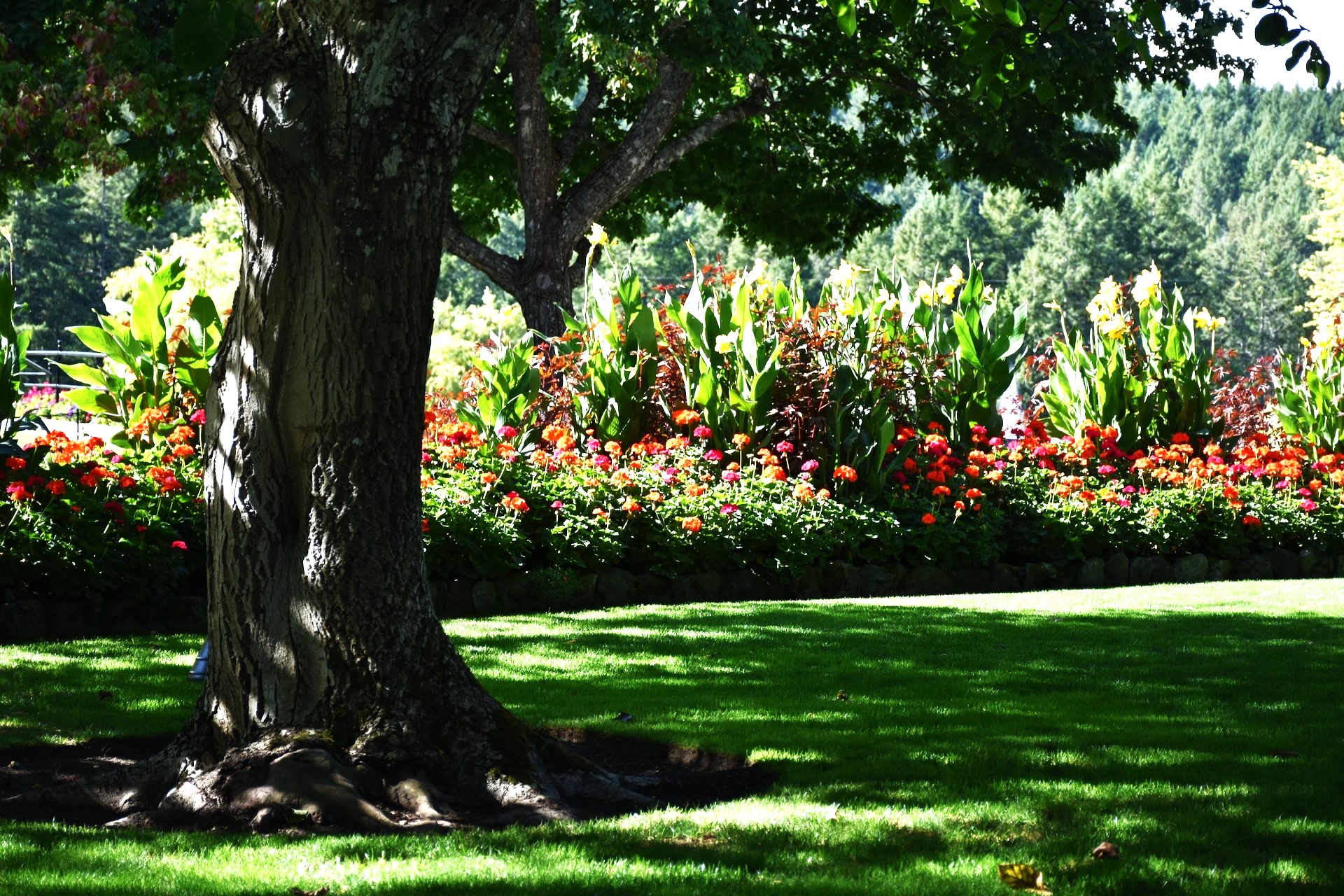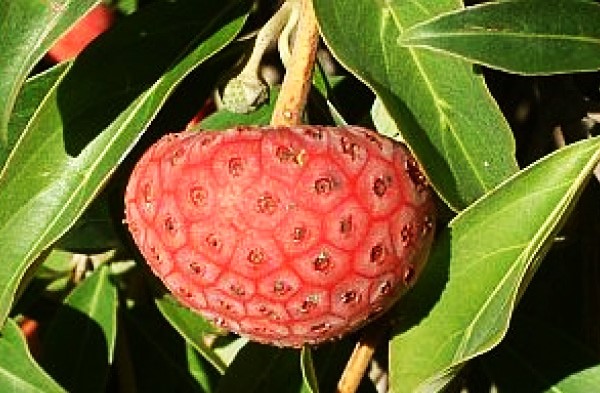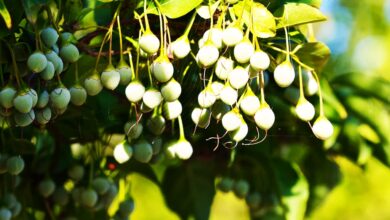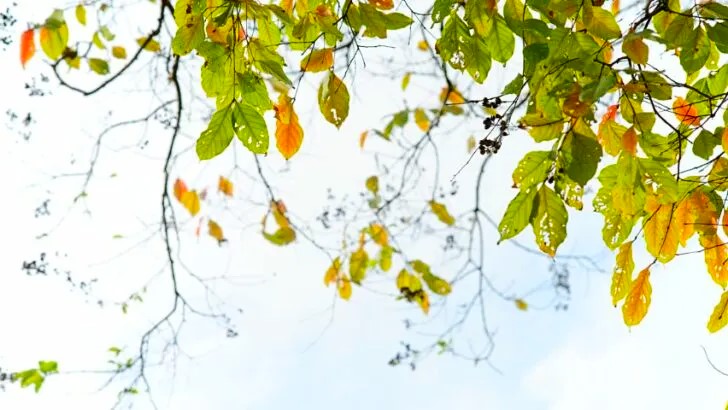Palm Tree Varieties To Add
Try These Palm Tree Types To Incorporate A Little Tropical Flavor Into Your Garden
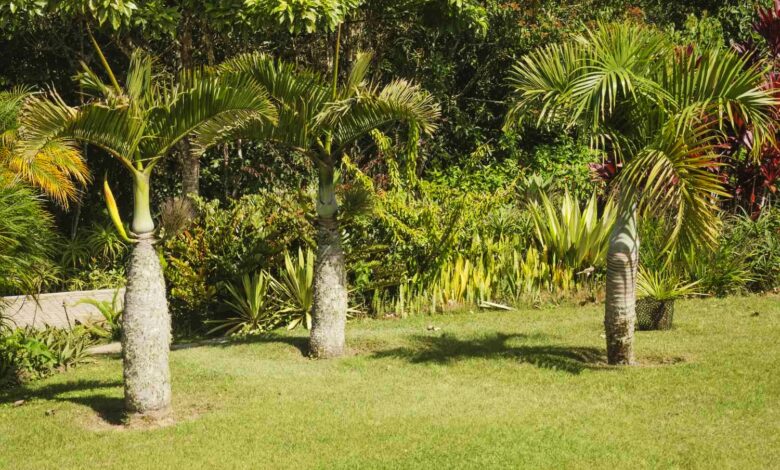
It’s simple to decide to plant a palm tree because of its captivating tropical silhouette and ability to dramatically enhance a landscape. Making a decision among the many varieties of palm trees is more difficult.
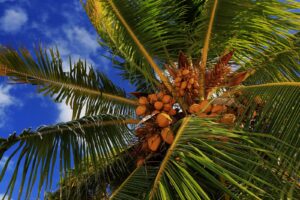
There are hundreds, if not thousands, of different types of palms, ranging in size from tiny to massive, if planting palm trees is something you’re interested in doing if you’re feeling particularly daring. To choose the ideal palm, consider your climate as well as the location of the backyard. The most common varieties of palm trees that grow well in residential landscapes are compiled here.
Essentials for Choosing a Palm Tree
In gardening, there are really no hard-and-fast rules. Instead, I personally prefer to learn by doing, which can be expensive and emotionally taxing when you watch your new plant rot from too-wet soil, dry out in the sun, or grow enormously and overtake your garden.
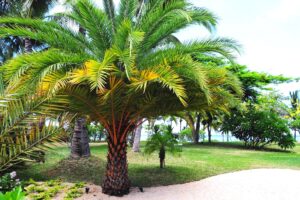
Even though you might prefer a massive specimen, a low-growing palm tree might be more suitable for your requirements. Therefore, consider these recommendations rather than laws. These are the things I would think about before going to the garden store if I were planting my first palm tree:
- Understand Your Hardiness Zone and Climate: It’s a myth that palm trees can only survive in hot, dry climates, but it’s a fact that different plant species require different amounts of sun and temperature. Since plants you purchase will probably have a label indicating the hardiness zones in which the plant will thrive, knowing your hardiness zone will be helpful. Based on the average minimum winter temperature, hardiness zones are determined. It’s also useful to know how much rain falls in your area, how windy it is, and how humid it is.
- Determine the Size of Your Garden or Yard: Examine the area where you intend to plant your new palm. Look up. How high could the palm reach before colliding with buildings or electrical wires? Examine every angle to see how much wider the palm could get without invading the area of another plant, your home, or another building.
- Understand Soil Type and Sun Availability: A common trait shared by many different types of palm trees is their preference for lots of sun. Verify how many hours a day a palm would receive in the location of your choice. Is it likely to get darker with time? Exist any trees that could invade the area? What kind of soil is it, too? In general, palms require soil that drains properly, and many of them like it slightly acidic.
Try These Eleven Popular Types of Palm Trees

Your head will spin from all the different types of palm trees available, from massive monoliths to smaller trees that grow well in clusters. These 11 palm tree varieties are suitable for landscaping at home.
1. Date Palm
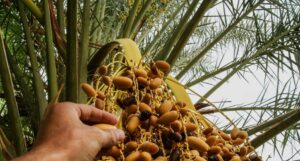
A magnificent specimen, the date palm (Phoenix dactylifera) holds the promise of sweet dates for anyone interested in growing one. It grows best in USDA zones 9 through 11, but it requires full sun. Just keep in mind that it requires a lot of room because it can grow up to 80 feet (24 meters) tall.
2. The Robellini Palm

One of the smallest palms you can grow is the Robellini palm (Phoenix roebelenii), also known as the pygmy date palm. Hardy in USDA zones 10 through 11, it thrives in full sun or light shade. It grows nicely in a container and adds a touch of elegance to patios, despite only reaching a maturity of six to twelve feet (1.8-3.6 meters).
3. Fan palm in California

One of the most well-known native trees is the California or desert fan palm (Washingtonia filifera). Despite growing slowly, it can reach a maximum height of 80 feet (24 meters). It prefers full sun or partial shade, making it perfect for gardens in USDA zones 8–11. To maintain this tree’s best appearance, regular pruning is required.
4. The Windmill Palm Tree
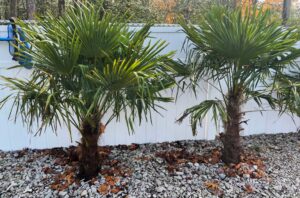
The windmill palm tree (Trachycarpus fortunei), also called the Chinese windmill palm, is one of the hardest trees you will ever try. It excels in USDA zones 8–10 due to its dual hardiness to cold and drought. This palm, which can reach a height of 25 feet (8 meters), enjoys partial shade and is known for its unique fan-shaped fronds.
5. The Cabbage Palm

The state tree of both Florida and South Carolina is the sabal or cabbage palm (Sabal palmetto). Their name, which refers to the cabbage-like flavor of their young leaves, comes from happy growing in full sun and being hardy in USDA zones 11–12. They can grow up to 30 feet (10 meters) tall and exhibit remarkable resistance to wind and salt.
6. Palm Parlor
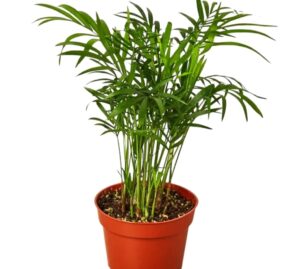
The neanthe bella palm, also known as the parlor palm (Chamaedorea elegans), is one of the most popular houseplants that you can grow. It is also one of the smallest palm trees in this selection. If grown outdoors, it can grow up to 16 feet (5 meters) tall; indoors, it can only reach half that height. USDA zones 10-11. The parlor palm is a happy shade-loving palm.
7. Observed Palmetto
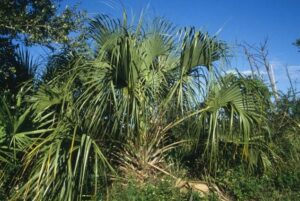
Seenoa repens, a slow-growing palm tree variety, is another hardy variety that can withstand wind, salt, and drought. It produces visually striking fronds that resemble fans. This clump-forming palm, which can grow up to 15 feet (4.5 meters) tall, thrives in USDA zones 8 through 10. It also does well in partial shade.
8. Lady Palm
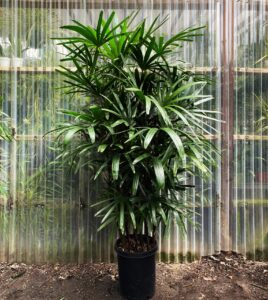
This is also a good option if you’re looking for a palm for a partially shaded area. The lady palm (Rhapis excelsa) has broad, lush blades that give a nice layered appearance that is ideal for borders and hedges. This palm tree can grow up to 15 feet (4.5 meters) outside and is hardy in USDA zones 9 through 11. It prefers moist soil.
9. The Majestic Palm
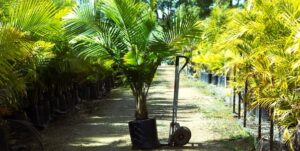
The majesty palm (Ravenea rivularis) is a striking plant that combines a strong physical presence with an effortless elegance. Its gracefully arching fronds capture the eye. It can grow up to 10 feet (3 meters) tall indoors as a houseplant, but it can grow up to 100 feet (30 meters) tall outdoors. Grow in USDA zones 10 through 11 with some shade.
10. Jelly Palm
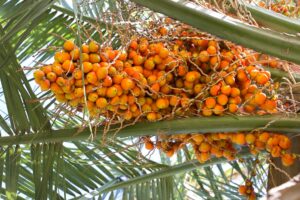
The jelly palm (Butia capitata), also called the Pindo palm, is a small, slowly growing palm tree with feathery fronds and a stout trunk. The resilient Pindo thrives in drought-tolerant landscaping and is content in both full sun and partial shade. Mature trees can grow to a height of 20 feet (6 meters) and are hardy in USDA zones 8–10.
11. The Queen’s Palm
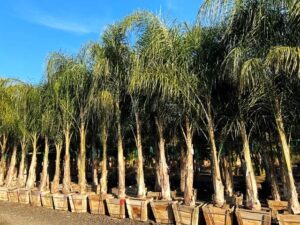
With its canopy of feathery-looking fronds, the queen palm (Syagrus romanzoffiana), one of the more quickly growing palm tree varieties in this selection, has a charmingly airy quality. When fully grown, this glossy, sun-loving palm tree can reach a height of 60 feet (18 meters) and thrive in USDA zones 9 through 11.

